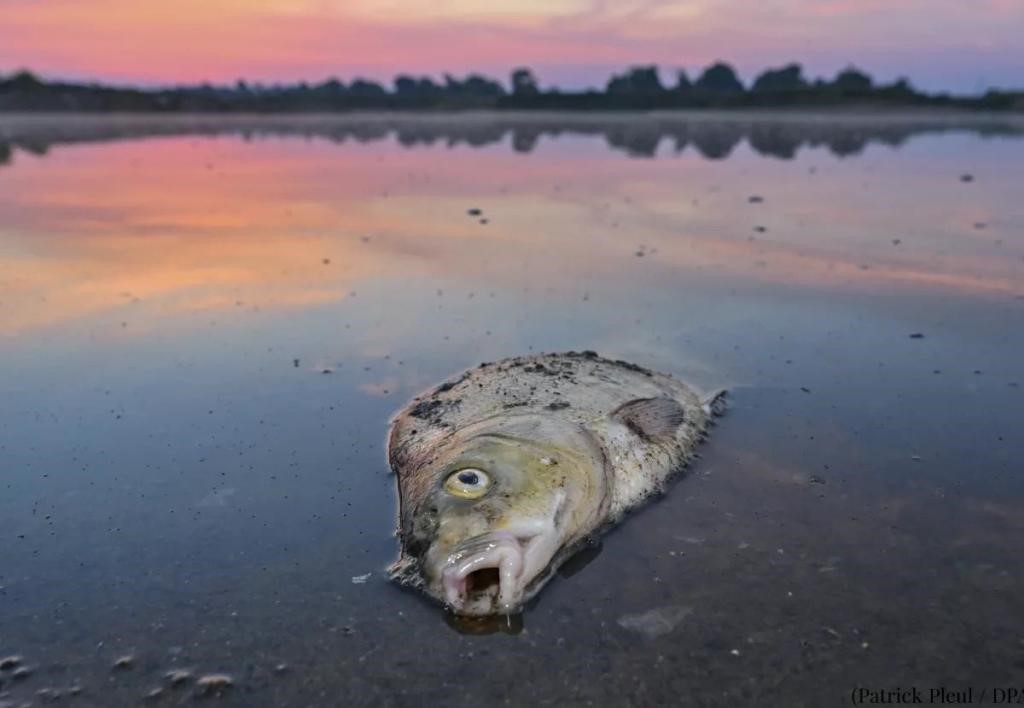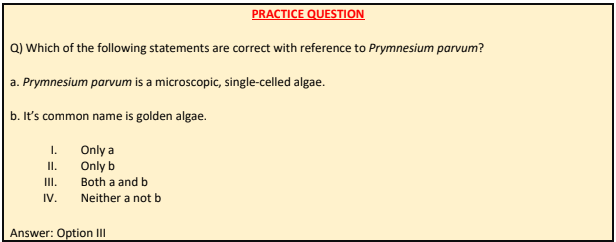Description

Copyright infringement not intended
Context: Oder river ecological disaster that killed hundreds of tonnes of fish in 2022 was human-made: Report. It is almost certain that a substantial toxic algal bloom, supported by human activity, caused the ecological destruction
Details:
- Last summer, the banks of the River Oder in Poland was a picture of doomsday — hundreds of dead fish washed up every day.
- From mid-July through mid-September, over 360 tonnes of fish would have died, along with many other aquatic creatures – a clear sign that the ecosystem of the river has been pushed beyond its tipping point. The rot spread over 500 kilometres along the river.
- The disaster also directly and indirectly impacted nature protection areas /protected habitats and their protected species alongside the Oder River.
- A new report by the European Union (EU)investigating the incident has confirmed initial concerns — the destruction was caused by toxic algal bloom made possible by anthropogenic factors.
.jpeg)
Causes:
- It is almost certain that a substantial toxic algal bloom caused their deaths. The causal species: Prymnesium parvum, is adapted to brackish salinities. A key factor enabling the proliferation of this species was the high salinity of the river during this time, probably in part resulting from discharges of saline industrial wastewater e.g. from mining.
- Other contributing factors were the drought and resulting low water levels reducing dilution and flow and also hydromorphological modifications to the river.
- High nutrient concentrations, especially phosphorus and nitrogen, are also key in promoting such blooms.
About the river:
- The river is one of Europe’s 20 large rivers and is valuable to the livelihoods of and recreation of the 16 million people residing in its catchment area and beyond.
- It also serves as a focus for nature preservation with numerous Natura 2000 sites located
along its length.
- It originates in the Czech Republic, flows through western Poland, forms the border between Poland and Germany, then drains north to the Szczecin Lagoon near Szczecin.
- It is Poland's second-longest river in total length and third-longest within its borders after the Vistula and Warta.
Prymnesium parvum:
Common name: golden algae
Identification:
- Prymnesium parvumis a microscopic, single-celled algae with four morphologically distinct forms
- Three of the forms are scaled, bi-flagellated, and have a flexible, non-coiling, needle-like filament called a haptonema.
- The fourth form is a scaled, non-motile, siliceous cyst
Size: Cells are 6 to 12 µm long and 3.5 to 8 µm wide
Native Range: P. parvum is ubiquitous worldwide in temperate zones

Ecology:
- Prymnesium parvum inhabits a variety of waterbodies including rivers, lakes, estuaries, fjords, coastal oceans, and ponds, including eutrophic, alkaline, and brackish waters.
- Under optimal conditions, P. parvum can reproduce rapidly and form a nearly monocultural bloom by releasing toxins into the water that immobilize or kill zooplankton and other phytoplankton to increase available food sources.
- It can survive in a range of water temperatures, from 5°C to 35°C, with blooms increasing between 10°C to 27°C
- It is mixotrophic, supporting its growth with autotrophy (photosynthesis) or heterotrophy if nutrients are scarce (typically during a bloom event)
- Vectors are thought to be ballast water and global trade of aquaculture, and local dispersal is attributed to transportation by birds, wind, and anthropogenic movement (drilling equipment, water tankers, and recreational boats)
Impact of Introduction:
- Prymnesium parvumproduces toxins that can destroy fish gills, and can kill both fish and other aquatic organisms such as tadpoles.
- Dense agregations of parvumlead to eutrophic conditions that produce large fish and animal kills in both freshwater in marine systems around the world, including aquacultural areas and fish farms.


https://www.downtoearth.org.in/news/wildlife-biodiversity/oder-river-ecological-disaster-that-killed-hundreds-of-tonnes-of-fish-in-2022-was-human-made-report-87806












